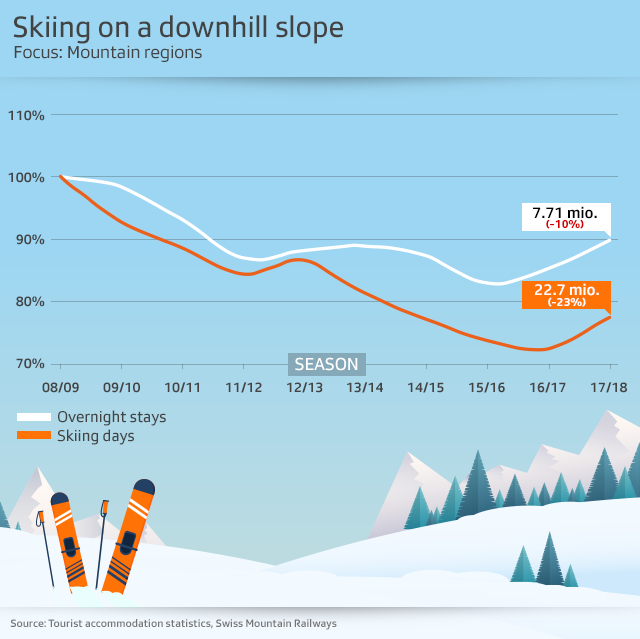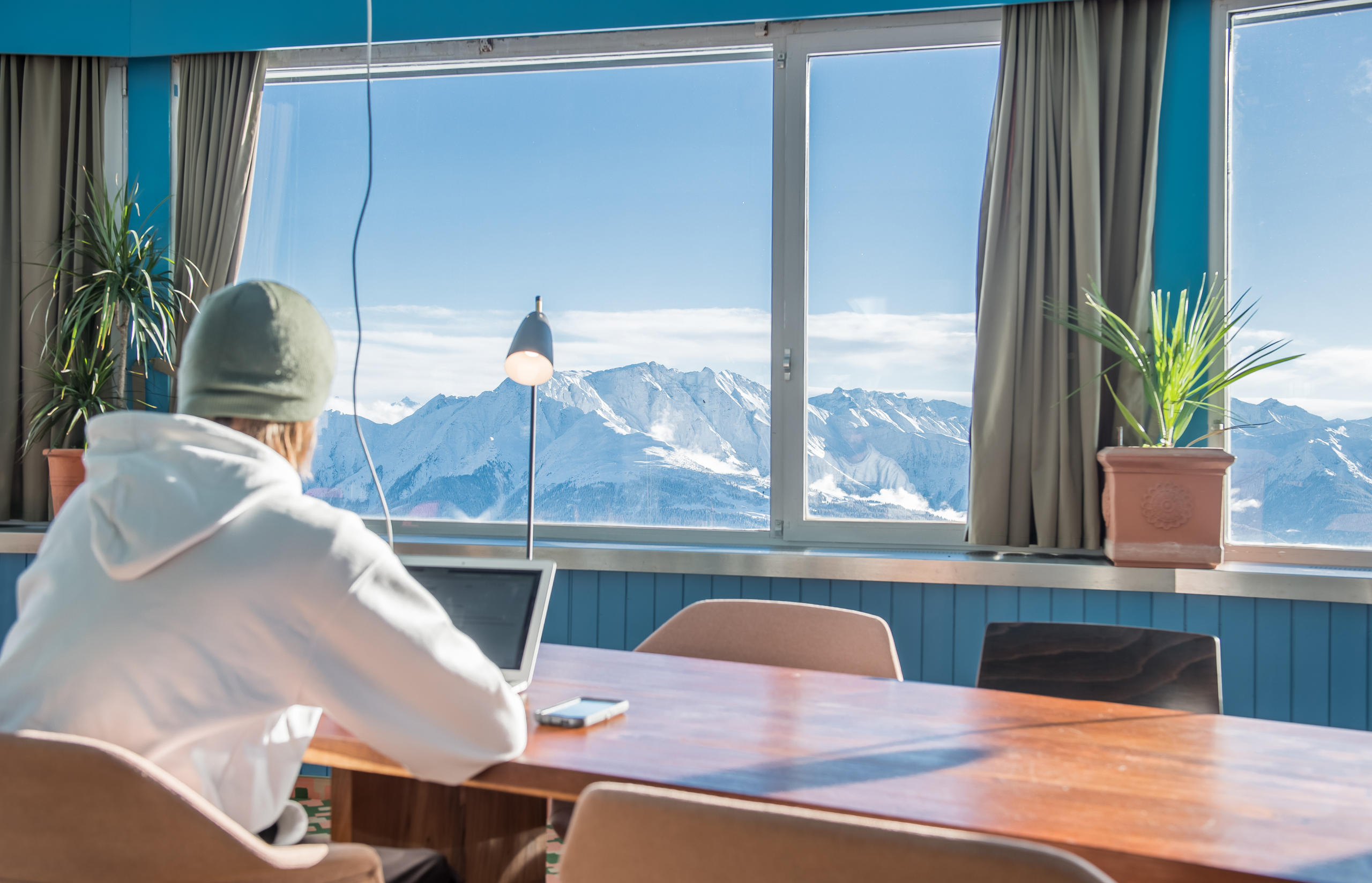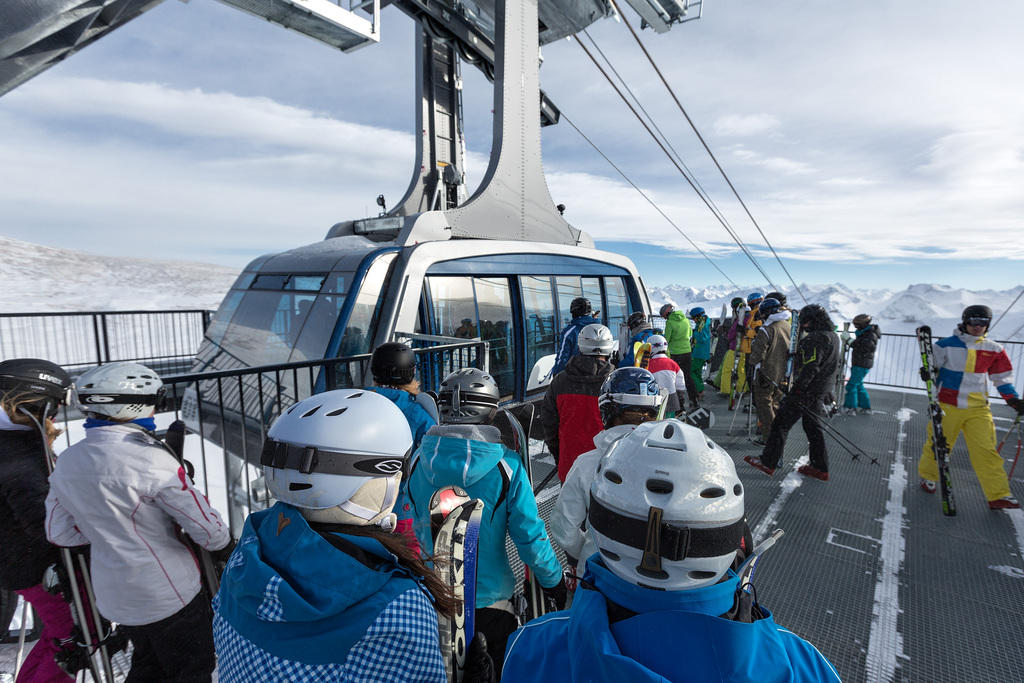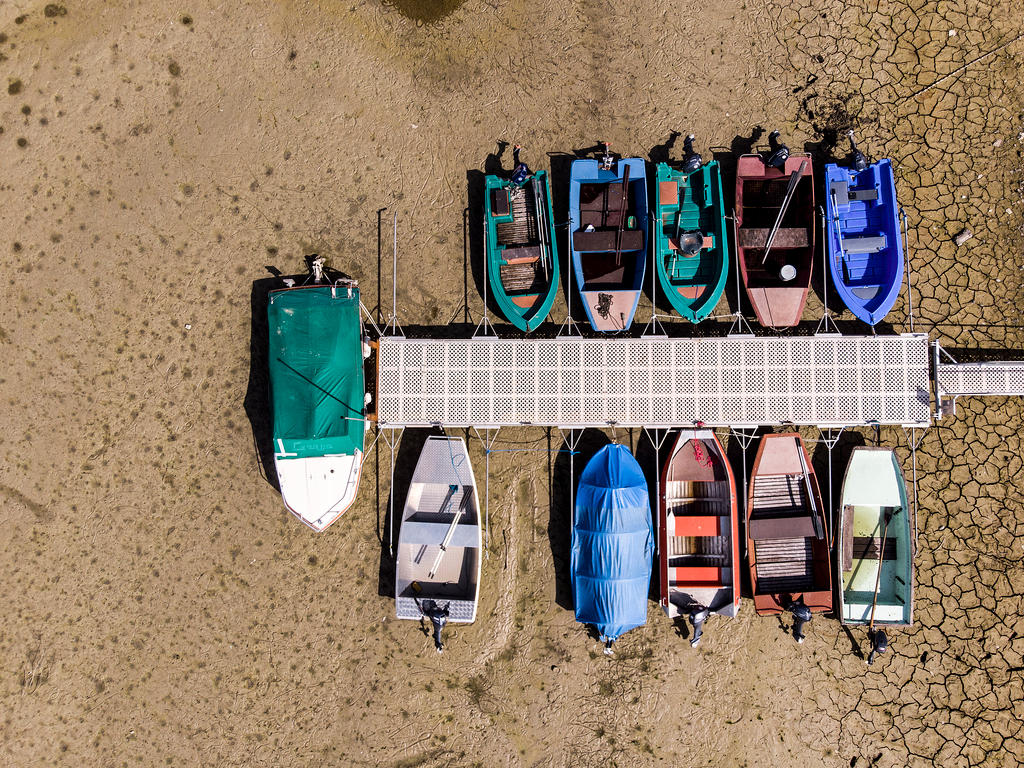Getting the Swiss back on skis

Switzerland has always thought of itself as a nation of skiers, but there is a whole section of society that is not tempted by the white stuff. Many of them would rather spend the winter holidays on a beach than on a mountain slope.
In general, fewer people are skiing in Switzerland. A report published in 2018 by the Swiss Tourism industry shows ski days were down 23% between the 2008/9 season and 2017/18. This reflects a general world trend. Swiss researcher Laurent Vanat publishes an annual international report on snow and mountain tourism. He writes, “It is the global Western skier market that is flattening, although this is not reflected in the number of skiers worldwide, which is growing thanks to developing markets such as China”.

The latest report from Swiss Mountain Railways, the association of ski-lift operators, notes that about two-thirds of skiers on Swiss slopes are locals. These are mainly younger people up to the age of 30, and baby boomers, aged 50 or over. The 30- to 50-year-olds are fewer and further between according to a study on skiing trends, carried out between 2013 and 2017. 7,000 people were interviewed in Swiss ski resorts, and the results were presented at a recent news conference by the Tourism Monitor SwitzerlandExternal link. It found that over five years, the number of skiers in this age group fell by 6%.
This is a big problem for Alpine regions. Swiss Mountain Railways reports that every fifth franc is generated by tourism and every fourth person works directly or indirectly in the industry.
Pricey sport
So why are there so few 30 to 50-year-olds to be seen on Swiss slopes? One reason is globalisation. Because of the reduced costs of travel, people can just as easily fly to a beach in winter or visit New York as lug themselves up a far-flung freezing cold mountain. Often, a week-long stay in a sunspot works out cheaper than a family ski holiday.
According to data External linksupplied by Swiss Mountain Railways, the association of ski-lift operators, a one-day ski pass for adults cost on average CHF61.36 ($62.53) in the 2017/18 season – more than a fifth more than in the 2004/05 season, when the ticket prices for 39 ski destinations were compared for the first time. A reportExternal link from the Federal Office for Sport shows that higher earners are much more likely to ski.
Those who have the skiing bug but not a lot of money to splash out might find that their strong Swiss francs go further in neighbouring Alpine countries such as Austria, France or Italy. If we look at the figures for St.Anton am Arlberg in Austria, the trend is clear. In the winter of 1999/2000, Swiss tourists accounted for 20,190 overnights. In the winter of 2014/2015, the figure was 42,940, representing an increase of 22,750 overnights or 112.7%.
Saas-Fee shows the way
Swiss ski resorts are well aware of the need to reduce costs. They have been falling over themselves to win back domestic clients by offering cheaper ski passes. Saas-Fee started two years ago, launching a season ticket for CHF222External link. As part of the deal, if 77,777 people signed up for a ‘wintercard’ (a season pass) by a certain date, each participant could buy the pass for CHF222. The offer was a hit and has been repeated this season. After a 17.7% increase in overnight stays in the winter season of 2016/17, the Saas valley expects an increase of at least 10% in 2018/19.
Many other resorts also offer reduced price winter passes, for example the Magic PassExternal link in western Switzerland (CHF899: adult price) which can be used in 30 different resorts, and the Top4 External link(CHF950: adult price) in the Bernese Oberland, for the Adelboden-Lenk, Gstaad, Jungfrau and Haslital ski regions. In the central Swiss resort of Andermatt, you can get a day pass for as little as CHF10 if you go on a day when low visitor numbers are expected.
Learn to ski in 3 days
Despite the clichés about Swiss people being born on skis, many have never had the chance to learn the sport and by the age of 30, often consider themselves too old to start. The Swiss Ski Federation wants to disprove this with new packages, for example the ‘First Ski Experience’. The ski instructor picks you up at your hotel, helps you to hire skis and gives you a one-hour lesson. On its websiteExternal link, the Swiss tourism branch features 15 resorts that offer this service.
The ski schools are also offering a packageExternal link which promises to teach absolute beginners to ski in 3 days. After three morning lessons, they guarantee that fledgling skiers will be able to parallel ski down a blue slope. swissinfo.ch filmed a 40-year-old mother of two take up the challenge in the resort of Villars-sur-Ollon in western Switzerland.

More
Learn to ski in three lessons!
Updated facilities
Another key to attracting skiers is providing state of the art facilities including snow machines, which guarantee that visitors can ski even if it does not snow for long periods. The largest ski resorts are investing sizeable amounts in new infrastructure.
Andermatt, for example, where the ‘SkiArena Andermatt-Sedrun’ is billed as ‘the largest and most modern ski resort in central Switzerland’, has about 200 snow-making machines allowing 550,000 m2 of slopes in the SkiArena to be covered with artificial snow.
Therese Lehmann Friedli at the Tourism Research department of Bern University says, for the moment, winter sports still generate more income than summer sports (80:20), but the investment is considerable. She says the total investment costs per kilometre of piste is about CHF1 million. The Swiss Mountain Railways Factbook for 2017 provides a breakdown of daily costs in a large resort:
- Creating artificial snow: CHF43,000
- Snow slope preparation: CHF41,000
- Running costs for lifts: CHF120,000
- Ski slope security: CHF16,000
In future there will still be winters with heavy snow, but because of climate change, they are predicted to happen less frequently. Swiss Mountain Railways believes man-made snow will help the ski industry to survive.
Ski a bit, work a bit
The industry also has to take into account changes in the way that people work. An increasing proportion of the labour force now works from home or in a freelance capacity. Many of these are in the 30-50-year-old category that the snow sports industry is so eager to reel back in.
Mia EngadineExternal link in Eastern Switzerland now offers co-working spaces for freelancers and out-of-office employees, so they can combine skiing and working. Laax has a similar approach, reaching out in particular to childless urban dwellers. Its BridgeExternal link facility (pictured below) opened in the 2017/2018 season: a hi-tech workspace in the heart of the snowy skiing and snowboarding region.

Just 50km away is Obersachsen, where the focus is on families. This is a so-called Family DestinationExternal link, a resort that has to meet minimum requirements in order to get the industry’s seal of approval. It’s all about convenience for families – easy access, a good price, a hotel near the slopes, ski rentals near the accommodation and childcare services, among other points: 21 resorts meet the criteriaExternal link.
Free skiing for kids
The thinking is that if you get children on skis, they will also ski as adults. Many resorts already offer free skiingExternal link for children. In a new campaign, the Swiss Tourism body, MySwitzerland, is giving away 12,770 ski passes for children in 44 resorts. The 6-day passes will be available until the end of the 2019 ski season. For the domestic market, the Cleven FoundationExternal link, spearheaded by ex-ski champ Bernhard Russi, is offering four days of free skiing (on Wednesday afternoons) to children up to age 12 in eight different Swiss resorts.
Keeping up the ski camp tradition
There is a fear that children from families that do not traditionally ski, or think the sport is too expensive, may never slap on skis and feel the joy of the slopes. School ski camps are an important recruiting ground for new skiers, so they are also being promoted.
In 2014, the Swiss government set up ‘the Initiative for Snow Sports Switzerland’, a joint project with snow sport associations and cantons, presided over by Tanja Frieden, Snowboard Olympic Champion in 2006. There is an online platform – GoSnowExternal link – where, for instance, teachers can book ski camps quickly and easily, and find the cheapest deals. Thanks partly to this, it’s thought, the number of children and adolescents attending snow sports camps officially recognised by the Federal Office for Sport has been rising since 2011. In 2017, 105,302 children attended camps at 2,314 different sites, according to government figures.
The future
Therese Lehmann Friedli from the University of Bern is convinced that, despite all these efforts to make skiing more attractive, the need to go on holiday in the Alps will stagnate or even decrease as the years go by. “Therefore, it is a matter of how alpine regions can develop in the future and also become more independent of tourism. They should develop more as living spaces and less as a tourism regions and become less growth-driven”. But for the foreseeable future, skiing is here to stay and the battle to attract winter tourists will be waged for as long as snow sports remain profitable.

In compliance with the JTI standards
More: SWI swissinfo.ch certified by the Journalism Trust Initiative

















You can find an overview of ongoing debates with our journalists here . Please join us!
If you want to start a conversation about a topic raised in this article or want to report factual errors, email us at english@swissinfo.ch.